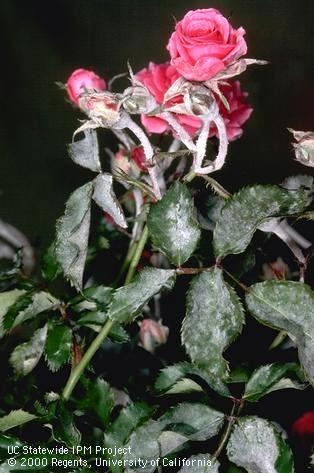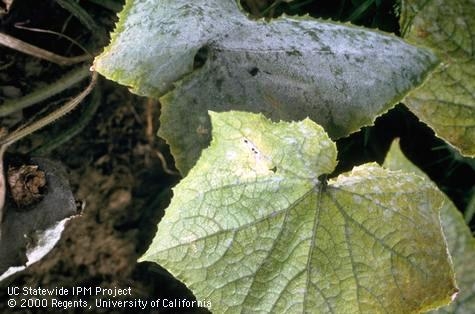
Powdery mildew is caused by several different fungi that may attack plant leaf surfaces, shoots, fruits, and flowers. There are several species of powdery mildew; all are spread by wind and thrive in shady areas when temperatures are between 60-80 °F. The fungi attack both new and old foliage, and can be a problem on certain plants. The disease usually occurs first on new leaves, before spreading to older parts of the plant. This is why over fertilizing worsens powdery mildew.
Ornamental Plants
Many woody and herbaceous plants are affected. Of special concern are rose, crape myrtle and sycamore, which can be seriously harmed by this disease. You can read in detail how to prevent and control this disease on ornamentals in the UC IPM publication Pest Notes: Powdery Mildew on Ornamentals.
Fruit and Berry Plants
Powdery mildew can be serious on woody plants like grapevines, caneberries and fruit trees. It can also affect strawberry plants. Read more about how it affects these plants in Pest Notes: Powdery Mildew on Fruits and Berries.
Vegetable Plants

Author - Associate Director for Urban & Community IPM/ Area Urban IPM Advisor